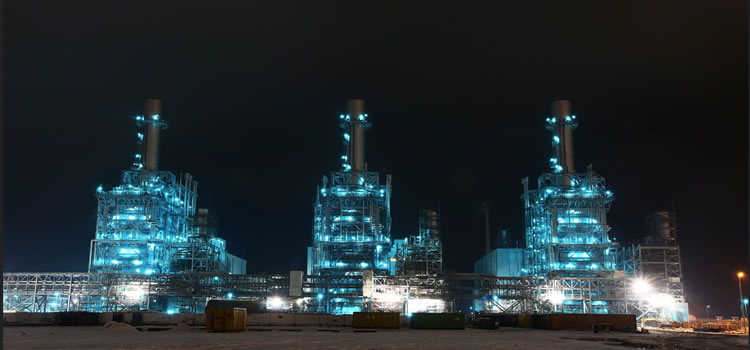Ammonia-to-Hydrogen Seen for Electricity Generation
By Stephen H. Crolius on April 26, 2018
Approximately 40% of the world’s energy budget is consumed in the generation of electricity. This is by far the largest use of primary energy across major energy-consuming sectors (transportation, industry, etc.). What role ammonia will play in the electricity sector is therefore a question of considerable importance for the sustainable energy system of the future. One concept currently on the table is power-to-ammonia as a means of electricity storage, whereby electricity is used to produce hydrogen and the hydrogen is reacted with nitrogen to produce ammonia. The other, mirror-image, concept is to use ammonia, or hydrogen derived from ammonia, as a fuel that can be turned into electricity.
This “back-end” use case is the focus of recent announcements from Mitsubishi Hitachi Power Systems (MHPS). According to an April 5 story in the Nikkei Sangyo, MHPS plans to put a “hydrogen-dedicated gas turbine . . . into practical use by 2030.” The company also stated that it has “started developing technology to extract hydrogen from ammonia,” citing ammonia’s ease “to store and transport.”
This news comes on the heels of an MHPS announcement last month that the company “will apply [its] expertise to investigate the technical feasibility of H2 firing” at the Nuon Magnum generating station in the Netherlands. As detailed in a previous July 12, 2017 press release from the Dutch Institute for Sustainable Process Technology (and discussed in an Ammonia Energy post), the Magnum plant will be the venue for demonstration of hydrogen as a fuel in a utility-scale setting. Project partners included in the 2017 announcement were Dutch power company Nuon, European natural gas pipeline operator Gasunie, and Norwegian oil major Statoil. Although MHPS was the original supplier of Magnum’s three combined cycle gas turbine (CCGT) generating units, it was not mentioned in the press release. But fast forward to the present and MHPS is now on board and ready to apply its “long history of success developing special fuels, such as synthetic fuels or blast furnace gas, for its gas turbines.”
It is not clear why there was a gap of eight months between announcements, but it’s possible that MHPS needed time to think through the opportunities and risks waiting for a power systems manufacturer in the complex but potentially rewarding hydrogen energy landscape. The reporting shows that MHPS is taking an evolutionary approach to the technology challenge, opting to move by degrees from its current natural-gas turbine technology to hydrogen-based technology: “First, we will develop a mixed-fired gas turbine that adds hydrogen to existing liquefied natural gas (LNG), and will finally put into practical use a dedicated fire gas turbine that uses only hydrogen as a fuel.”
The first step in this journey was not completed until January 2018, when, the Nikkei Sangyo story says, “MHPS succeeded in a demonstration experiment that burns 30% hydrogen mixed in a large gas turbine equivalent to 700,000 kilowatts of output.” As with all combustion technologies, a central challenge is controlling the formation of polluting nitrogen oxides. It appears the critical outcome of the January demonstration was not the mixed-fuel operation of the turbine per se, but validation of a combustion method that maintains energy conversion efficiency while reducing “NOx emissions to below the standard value [and] reducing CO2 emissions by 10% compared with conventional LNG thermal power plants.” The company’s near-term plan involves “repeatedly conducting such demonstration experiments” with the intention of completing the design of the “mixed-fired gas turbine by 2020.”
The timeline beyond that calls for operation of a fully hydrogen-powered CCGT unit in 2023 (consistent with the Nuon Magnum timeline), with commercial introduction to follow in the mid-2020s. It is expected that the hydrogen at that stage will still be derived from natural gas. The transition to green ammonia as the hydrogen source is projected as something that “could be possible . . . from the year 2030.”
MHPS is a joint venture that was formed by the 2014 merger of Mitsubishi Heavy Industries’ and Hitachi’s thermal power generation systems businesses. The Nikkei Sangyo article states that the company is regarded as “a world leader in large gas turbines for power generation.” The enterprise has approximately 30,000 employees in core and affiliated companies and boasts regional offices and manufacturing operations across Asia, Europe, and the Americas. Most notably, MHPS is a member of Japan’s Green Ammonia Consortium. (Click here and here for Ammonia Energy posts on the Consortium.)
